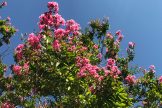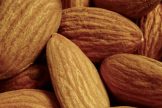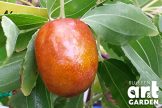
Most of us would see trees as purely cosmetic, put here to make the place look pretty… but they are so much more than that. They are a vital part of the ecosystem. All trees are a major source of the air we breathe, they help control and stabilize the world’s climate and they provide food and shelter for millions of species.
There are many benefits in having them in our own gardens.
Environmental Advantages
Strategically placed trees can improve the energy efficiency of buildings. Trees planted on the north side of the house can reduce indoor temperatures by 6-12°C in summer by shading your walls, windows and roof.
A deciduous tree is preferable as this will allow the winter sun through, providing you with natural heating. To maximise the cooling effect, the roof as well as the walls must be shaded. This means planting tall trees, and not too far away from the house.
Where evergreen trees are used for shading the home, they are best positioned on the eastern or western sides of the house. If you place them on the northern side they should have branches high enough to let as much sunlight through as possible in winter.
In winter a tall, thick tree can deflect cold winds over and around your home, reducing heat loss by up to 25%. This is a relatively easy and inexpensive way to reduce greenhouse gases by reducing your heating requirements. Do your bit for the environment!
Certain species of trees are densely foliaged all the way to the ground. These make ideal hedges and have the added bonus of being effective windbreaks.
Aesthetic Advantages
If your property is overlooked by neighbours, the right trees correctly placed can provide you with complete privacy that is far better for the environment than a fence, not to mention more durable. Neighbours can be easily screened out with a small,
densely foliaged tree in as little as five years.
With so many varieties and sizes to choose from, it’s easy finding one to suit your needs, position and taste. Foliage and flower colour choices are endless, and some trees have highly ornamental bark and interestingly textured trunks.
Planting trees is not only an enjoyable activity, but a way of leaving your mark on the world. Since most species have a lifespan a lot longer than our own, they may still be a feature centuries from now. Planting a tree is a great legacy for future generations.
Native Trees
Native trees are extremely drought hardy, and the current lack of rain we are experiencing explains why they are more popular now than ever before.
Apart from being hardy in drought, fast growing and very attractive, they are also an important source of food and shelter for local wildlife. If it wasn’t for native trees where would our furry and feathered friends live? Every native tree you plant will become a home or a food source for many species of local fauna. Witness nature at work in your garden for years to come.
In recent times, growers have been introducing improved cultivars to supply gardeners with options that are better suited to the suburban backyard. These may have a more compact habit, or more vibrant coloured flowers than the original. Some species, such as Eucalyptus ficifolia, are being grafted (rather than seed grown) to guarantee flower colour.
Exotic Trees
Everybody, green thumb or not, has admired a Jacaranda in bloom, an autumn display of brilliant orange foliage or elegant Magnolia flowers telling us spring is around the corner.
Many exotic trees are adaptable to Melbourne soils and climate. A number of deciduous trees enjoy our cooler winters, something our neighbours up north are very envious of. Take advantage of the seasonal changes and you’ll be rewarded with free home insulation.
As with natives, many exotic trees have been developed recently to suit smaller areas… not having enough room is no longer an excuse! Some trees can be kept to 3m, or even grown in pots. (eg. Magnolia Little Gem)
Produce Trees
A productive tree for ornamental and shade purposes is something that might not have crossed your mind. Shade and beauty with the added bonus of a fruit, nut or edible leaf.
We supply a large range of produce plants year round. Again, there are compact growing options, such as lime trees. There are also many hardy, low maintenance options. You can also forget spraying with chemicals every year… there are many ways to avoid this. Ask one of our nursery staff for assistance.
Nothing compares to the satisfaction you receive when picking produce straight off your organically grown tree.
BAAG’s Top Trees
Below you will find a list of the hot picks our staff have put together… trees for to suit almost any situation you can think of.
IMPORTANT NOTE: Heights mentioned are an indication only. Trees can vary to a large extent depending on a range of factors. Ask staff if you need more information or if accurate heights are important in your circumstances.

Trees Over 10m Tall
Pyrus calleryana ‘Capital’ and ‘Chanticleer’ – 11m x 4m.
Quercus palustris Pin Oak – 15m x 8m.
Angophora costata – 20m tall
Acacia melanoxylon – 20m tall
Banksia integrifolia – 15m tall
Corymbia citriodora Lemon scented gum – 20m tall
Acer rubrum ‘October Glory’ – 12m x 9m
Brachychiton populneus – 5-15m tall
Eucalyptus melliodora – 30m tall
Gleditsia triacanthos var. inermis ‘Sunburst’ – 12m x 8m
Flindersia australis – 15m x 10m
Casuarina cunninghamia – 20m tall
Trees 5m to 10m Tall
Elaeocarpus reticulatus – 8m x 4m
Eucalyptus cladocalyx nana – 10m tall
Eucalyptus torquata – 8m tall
Tilia cordata ‘Greenspire’ – 9m x 6m
Malus ioensis ‘plena’ or ‘Sugar Tyme’ – 6m x 4.5m
Eucalyptus pauciflora ‘Little Snowman’ – 7m x 4m
Macadamia – 10m x 8m
Fraxinus excelsior ‘Aurea’ – 7m x 7m
Hymnosporum flavum – 10m x 6m
Betula pendula – 10m x 6m
Fraxinus griffithii – 7m x 3m
Trees 3m to 5m Tall
Eucalyptus caesia – 5m x 3m
Banksia ericifolia – 5m x 3m
Acer palmatum ‘Osakazuki’ – 4m x 4m
Banksia ‘Giant Candles’ – 5m x 5m
Cercis canadensis ‘Forest Pansy’ – 5m x 5m
Gleditsia triacanthos var. inermis ‘Elegantissima’ – 4m x 3m
Lagerstroemia indica ‘Zuni’ or ‘Tuscarora’ – 4m x 4m
Malus floribunda – 4m x 4m
Prunus ‘Elvins’ – 3m x 3m
Eucalyptus ficifolia ‘Summer Red’ – 5m x 3m
Plum trees – 4m x 4m
Apricot trees – 4m x 5m

Trees to 3m Tall
Acer palmatum ‘Red Pygmy’ – 2m x 2m
Ballerina Apples – 3.5 x 0.6m
Syringa vulgaris ‘Charles Joy’ or ‘Cora Brandt’ – 2m x 2m
Lemon dwarf ‘Meyer’ – 2m x 2m
Prunus ‘Snow Fountains’ – 2m x 2m
Lagerstroemia indica ‘Tonto’ – 3m x 3m
Acer palmatum ‘dissectum Atropurpureum’ – standards
Dwarf Apples – 2m x 2m
Espaliered Fruit trees – 2m x 2m
Malus ‘Wandin Pride’ Apple – 2m x 2m
Almond ‘All in One’ – 3m x 3m
Quince trees – 3m x 3m
Large Shade Trees
Acer rubrum ‘October Glory’, 12m
Melia azedarach, 10m
Gleditsia triacanthos ‘Shademaster’, 10m
Jacaranda mimosifolia, 10m
Eucalyptus leucoxylon ‘rosea’ 15m
Acacia implexa, 10m
Acacia melanoxylon, 15-20m
Trees For Red Autumn Colour
Acer palmatum eg. ‘Osakasuki’, 4m
Lagerstroemia sp, 5m
Acer rubrum eg. ‘Fairview Flame’, 11m
Pyrus calleryana ‘Capital’, 11m
Fraxinus angustilfolia ‘Raywood’, 12m
Parrotia persica, 7m
Trees For Golden Autumn Colour
Acer palmatum eg. ‘Sango Kaku’, 6m
Liriodendron tulipifera, 13m
Fraxinus excelsior ‘Aurea’, 7m
Robinia pseudocacia ‘Frisia’, 10m
Gleditsia triacanthos var. inermis ‘Sunburst’, 12m
Gingko biloba, 9m
Cercis Canadensis Forest Pansy, 5m
Screening Trees
Waterhousia floribunda, 10m
Juniperus chinensis ‘Spartan’, 4m
Acacia podalyriifolia, 5m
Acmena smithii, 6m
Prunus lusitanica, 10m
Magnolia Little Gem, 5m
Pomegranate, 4m
Laurus nobilis, 4m
Trees For Narrow Spaces
Acer platanoides ‘Crimson Sentry’, 7x4m
Betula pendula, 10x5m
Pyrus calleryana ‘Capital’, 11x3m
Allocasuarina littoralis, 8x4m
Elaeocarpus reticulatus, 8x3m
Produce Trees For Large Containers
Olives, 3m
Dwarf Citrus, 2m
Ballerina apples, 3.5m
Laurus nobilis, 3m
Trixzie Peach and Nectarines, 1.5m
Backhousia citriodora, 3m
Produce Trees For Shade
Avocados, 8m
Walnuts, 10m
Loquats, 7m
Mulberry ‘Black English’, 10m
Olives, 8m
Pears, 6m
Fig, 6m
Trees For Quick Growth
Lophostemon confertus, 15m
Eucalyptus sp.
Virgilia capensis, 8m
Acacia sp.
Gleditsia triacanthos ‘Sunburst’, 12m
Paulownia sp. 12m
Pyrus calleryana ‘Chanticleer’, 11m
Fraxinus griffithii, 7m
Melia azedarach, 10m
Trees For Floral Display
Lagerstroemia indica, 5m
Jacaranda mimosifolia, 10m
Cercis canadensis ‘Forest Pansy’, 5m
Michelia doltsopa, 8m
Malus ioensis ‘plena’, 6m
Eucalyptus ficifolia, 10m
Trees For Habitat
Callistemon Dawson River Weeper, 5m
Angophora costata, 20m
Elaeocarpus reticulatus, 8m
Hymenosporum flavum, 10m
Eucalyptus forrestiana, 5m
Acacia pendula, 10m
Trees For Coastal Conditions
Brachychiton acerifolius, 10m
Leptospermum petersonii, 4m
Banksia integrifolia, 15m
Allocasuarina torulosa, 5-12m
Agonis flexuosa, 10m
Allocasuarina verticillata, 5-10m
Trees For Courtyards and Large Containers
Agonis ‘Afterdark’, 6m
Brachychiton rupestris, 4m
Agonis ‘Burgundy’, 3m
Magnolia ‘Little Gem, 5m
Cercis canadensis ‘Forest Pansy’, 5m
Acer palmatum, Weeping, 2m
Eucalyptus caesia, Silver Princess, 5m
Lagerstroemia indica ‘Sioux’, 4m
Trees For Boggy Soils
Eucalyptus gunnii, 20m
Tristaniopsis laurina, 6m
Casuarina glauca, 20m
Callistemon ‘Kings Park special’, 4m
Lophostemon confertus, 15m
Trees for Copses
(Copses are when you group the same trees together, 3 works best)
Eucalyptus ‘Little Spotty’, 7x4m
Betula pendula ‘Dalecarlica’, 12x5m
Eucalyptus ‘Silver Princess’, 5x3m
Allocasuarina littoralis, 8x4m
Pyrus calleryana ‘Capital’, 11x3m
Acacia melanoxylon, 10x3m
Choosing Your Tree
Trees come in a wide range of shapes and sizes, ask yourself what it is you are planting for.
- Is it to create shade, screening for privacy or shelter from wind?
- Do you have a limited area, or a large open space?
- Do you need it quickly?
- Do you really need more than one?
Ask yourself these questions. This will reduce the chances of you having to pull it out in ten years because it’s not really what you had in mind. Often trees are planted too close together, the falling leaves are a nuisance or the roots are ripping up your driveway. Also consider your neighbours, as the tree may impact on their side of the fence as well.
Planting Your Tree
Trees are not difficult to plant, however a little time and effort preparing the site will result in a much healthier and faster growing specimen. As a general rule, spring and autumn are the best times to plant. This avoids the extremes of summer and winter. Early spring ensures a warm season ahead to get the roots settled. Regular water is crucial until autumn, as one hot dry day in summer could be fatal. Early autumn is also a good time to plant as the soil is still warm, inducing rapid root growth. Again, adequate water must be provided. If you live in an area where frost is heavy, spring planting is recommended.
Down The Drain
Before buying a tree, test the drainage of your soil by digging 30cm deep holes where you want to plant. Fill these with water, if the water has drained away after 24 hours, your drainage is adequate. If not, you will need to look at trees for water logged soils.
I’m Hungry
Trees extract large quantities of nutrients from soil, and you need to provide this for them. If your tree comes from a region with a humus rich, moist soil, you will need to mimic this. Planting time is the best opportunity to add compost and wetting
agents to the soil. These will add nutrients while improving the water holding capacity.
Can You Dig It?
Dig a large hole. (twice the width of the pot, and 30cm deeper) This will give enough space for your tree to establish. Water before removing it from the pot then loosen the root ball a little to ensure that roots will start growing outwards and not in a circle. Bare rooted plants won’t need this as they have not developed any major roots yet. Plant with the trunk at the same level as it was in the pot. Backfill with soil and compress the firmly to ensure there are no large air pockets. Water in well and fertilise every few weeks with Seasol seaweed concentrate for the first few months.
Don’t Forget To Mulch
This conserves moisture and prevents weeds. It’s advised that trees not be grown in the middle of lawn, as water and nutrients will be consumed by the grass and wasted. This will result in a slow growing tree. Fertilise and water your tree out to the dripline. Most of the feeder roots are out this far, not up at the trunk. Mulch must be kept clear of the trunk to reduce the chance of collar rot.
We All Need Support
Staking trees is often done if trees are likely to be exposed to strong winds. A two metre stake driven firmly into the planting hole (at least 10cm from the trunk) is acceptable. Try not to disturb the roots and also try to remove the stake at a young age, so the tree doesn’t become dependent on it. Loosely tied stocking tie in three places will not damage
the trunk.
Caring For Your Tree
Ongoing maintenance of your tree will definitely include watering, fertilising and maybe the occasional pruning job. This is necessary for almost all fruiting trees. Pruning of non-fruiting trees is quite uncommon and is only undertaken to remove dead, diseased, broken or unwanted branches.




